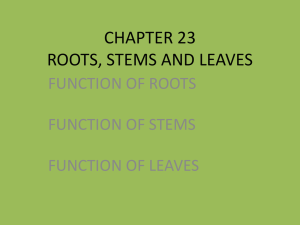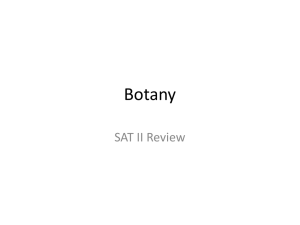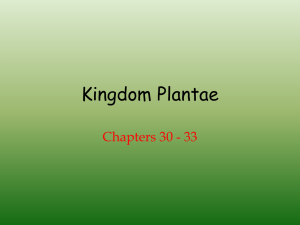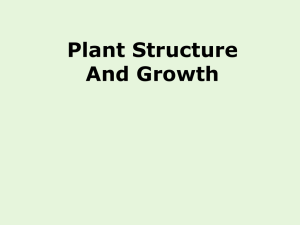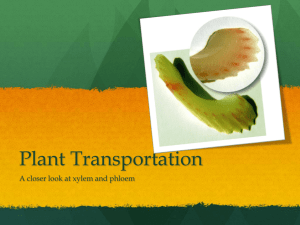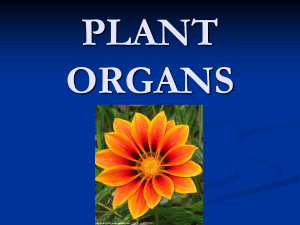Chapter 7
advertisement
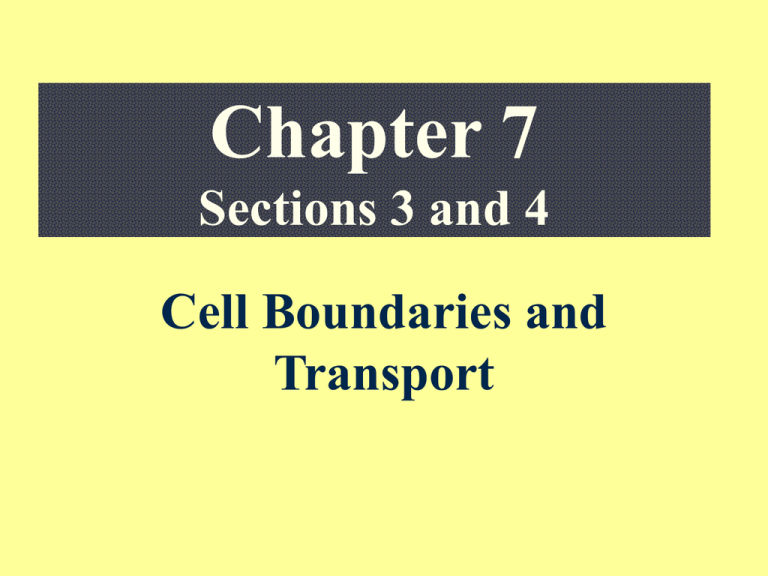
Chapter 7 Sections 3 and 4 Cell Boundaries and Transport Cell Membrane What are the yellow and blue structures located in the cell membrane? Proteins and phospholipids Transport Is the absorption and circulation within an organism Look out!! What is the structure all the way to the left? Cell membrane Absorption The passage of materials across the cell membrane and into the cell Materials are absorbed into the small intestine of a human through the villi, small fingerlike projections on the inside tube of the intestine. Circulation The movement of materials within a cell and/or throughout an organism a) blood circulation - throughout the body b) intracellular circulation - within the cell (cyclosis) I. Absorption Processes of Diffusion The movement of particles from an area of high concentration to an area of low concentration Passive Transport A type of transport in which materials move across the cell membrane without using energy ( high concentration to low concentration) Is diffusion a type of passive transport? Yes Types of Solutions Hypertonic: The solution has a higher concentration of solute particles than water compared with another solution Hypotonic: The solution has a lower concentration of solute particles than water compared with another solution Isotonic: The solution has a lower concentration of solute particles than water compared with another solution External vs. Internal Solutions hypertonic, hypotonic or isotonic? Hypotonic Does water move into or out of the cell? Into the cell By what process does the water move into the cell? Osmosis/Diffusion Active Transport A type of transport requiring energy to move materials across the cell membrane (low concentration to high concentration) If the diagram on the left represents active transport, which side has the higher concentration of molecules? Side 2 Active Transport (cont.) What is the source of energy for this process? ATP What process provided the energy for active transport? Cell Respiration In a cell, what would the yellow line represent? The phospholipids of a membrane What would the green rectangle represent? A transport protein Concentration Gradient The difference in concentration between a region of high concentration and a region of low concentration If substances flow with the concentration gradient, it is known as passive transport. If they flow against the concentration gradient, it is active transport. Concentration Gradient (cont.) Diagram A Diagram B Does a concentration gradient exist in either diagram? Diagram B What kind of solution exists in diagram B: hyper, hypo or isotonic? hypertonic Cell membrane Made up of proteins and lipids Also known as : - plasma membrane - selective membrane - semipermeable membrane Water molecules are small enough to easily diffuse across the cell membrane Osmosis The diffusion of water across a semipermeable membrane from a region of high concentration to a region of low concentration Example of Passive transport II. Circulation Intracellular Circulation Circulation within the cell To see cyclosis in an elodea cell, click on the hyperlink and scroll down to Measurement of cyclosis in the elodea. Cyclosis, the streaming of cytoplasm, also occurs in ameba when they are performing phagocytosis Extracellular Circulation Circulation outside of the cell Transport in Vascular Plants Plants have vascular (conducting) tissue known as xylem and phloem 1. Xylem- carries water and dissolved materials upward from the roots to the stems and leaves. 2. Phloem- carries food (glucose) and other organic compounds from the leaves throughout the rest of the plant. Roots Roots are structures that specialize in the absorption of water and minerals from the soil, and the movement of these materials upward to the stem Root Hairs Found on roots Increase surface area for water absorption Stems Structure is more complex than roots The xylem and phloem tubes are continuous with the xylem and phloem of the roots Leaves The xylem and phloem tubes in the leaves are in vascular bundles called veins The xylem and phloem tubes are continuous with the xylem and phloem of the roots and stems Bryophytes vs. Tracheophytes Bryophytes Are simple, multicellular organisms that lack vascular tissue (xylem and phloem) Therefore, transport is done by diffusion through cell membrane Bryophytes - The Bryophytes have - no true roots, stems or leaves. - No vascular tissue (no tubes) Ex: moss - Tracheophytes Are higher, more complex multicellular organisms that have vascular tissue for transport Tracheophytes - 2. Tracheophytes- Have true roots, stems, and leaves. - Have vascular tissue - Ex: trees and flowering plants Plant Processes Movement of nutrients and water from the ground and into the root hairs involve the following: 1. Diffusion (nutrients in) 2. Osmosis (water in) Transpiration The evaporation of water from the leaves through the stomates Transpiration calls for the need of more water in the leaves, and as a result, water is pulled upward to replace the water that has evaporated Transpirational Pull The upward pull of water through the xylem due to transpiration


